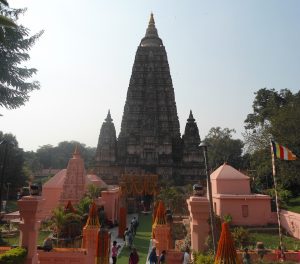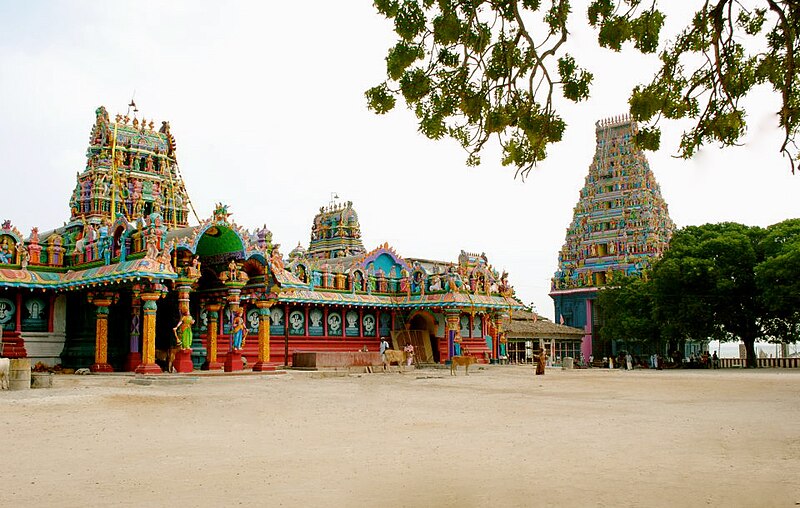OBBG00029 Bodhgayā sanctum stone image of Buddha in bhūmisparśa mudrā
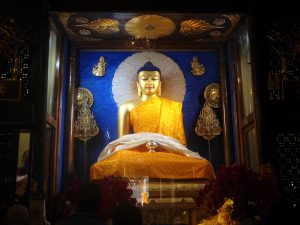
OBBG00029. Bodhgayā, Bihār. Sanctum image of Buddha in bhūmisparśa mudrā in the Mahābodhi temple. Photograph by Daniela De Simone.
INBG00029 Bodhgaya pithipati inscription on the pedestal of the sanctum image of the Mahabodhi temple
![]()
Bodhgayā (बोधगया), Bihār. Inscription of pīṭhīpati ācārya Jayasena (INBG00029) on the pedestal of the sanctum image of the Mahābodhi temple (OBBG00029). Latest critical edition that of Balogh (2021), see Concordance for bibliographic data.
Inscription of Hariraja on a seated bronze Buddha in the British Museum

Icchāwar (Uttar Pradesh). Inscription of Harirāja on the pedestal of a seated Buddha now in the collection of the British Museum.
OBPYU16 Socle of Kan Wet Khaung Mound Stone Buddha Image
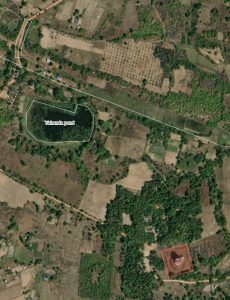
Sri Ksetra, Myanmar. Yahanda gate and Baw Baw Gyi stūpa (Wikimapia).
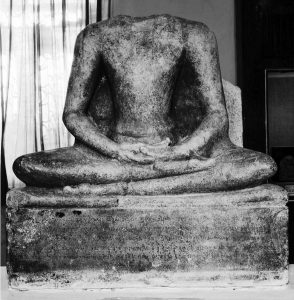
Seated Buddha from the Kan Wet Gaung Gon, near the southern side of the Baw Baw Gyi stūpa. Sriksetra Museum 2013/1/48.
PYU16 Socle of Kan Wet Khaung Mound Stone Buddha Image Inscription
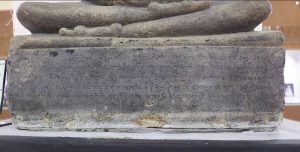
Front of the Pedestal of the Seated Buddha from the Kan Wet Gaung Gon, near the southern side of the Baw Baw Gyi stūpa.
PYU16 Socle of Kan Wet Khaung Mound Stone Buddha Image Inscription.
OBBG00016 Bodhgayā coping stone with and an inscription mentioning gaṃdhakuṭī
Indor (District Guna, Madhya Pradesh). Hero-stone (OBIG1177a) with an inscription of VS 1177.
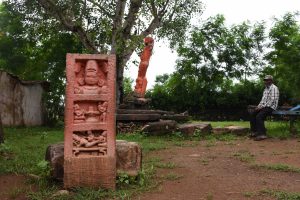
Indor (District Guna, Madhya Pradesh). Hero-stone dated VS 1177.
OB03182 Nainativu Inscribed Slab of Parakramabahu I
Nainativu Nagapooshani Amman Temple, Sri Lanka
IN03229 Nainativu Tamil Inscription of Parakramabahu I
This inscription is engraved on both sides of a stone slab, which was found lying opposite the entrance to the famous Nākapūṣaṇi-Ammaṉ Temple on the sacred island of Naiṉātīvu in the Jaffna district. Mudaliyar Rasanayagam made an eye-copy of the inscription and published the text as a footnote in his book Ancient Jaffna (1926: 208–209), although his reading was incomplete and contain several errors. Subsequently, the Archaeological Department prepared an estampage of the record in 1949, which Karthigesu Indrapala used to produce a more accurate text and translation in the University of Ceylon Review, 21, no. 1 (1963), pp. 63–70. Large portions of the original inscription have been lost. This is due to the fact that the lower portion of the slab has been broken off and built into the wall of the shrine. Furthermore, the first part of the inscription, written on the obverse of the slab, was obliterated by workmen sharpening their tools on their stone when it lay on the ground outside the temple. Only the text on the reverse side of the slab has survived. Fortunately, the preserved lines contain both the purpose of the edict and the name of the ruler who issued it, although it does not mention the regnal year or date. The record is written in Tamil except for the last two lines, which are in Sanskrit and state that the edict was issued by Deva Parākramabhuja, the emperor of all Siṁhala. The name Parākramabhuja is the Sanskrit equivalent of the Sinhalese Parākramabāhu and may refer to any of the Sinhalese rulers with this name. On palaeographic grounds, the inscription may be assigned to the twelfth or thirteenth century, hence the king question must be either Parākramabāhu I or II, since all the other rulers of that name reigned in significantly later periods. From the contents of the inscription, it can be inferred that the edict was issued by Parākramabāhu I, since the record contains trade regulations concerning wreckages off the port of Ūrāttuṟai (present-day Kayts). The fact that these regulations were proclaimed by the king himself indicates that he was in supreme control of the northernmost parts of the island. Parākramabāhu II did not enjoy such authority over the northern regions, while Parākramabāhu I had control over the entire island. Indeed, there is contemporary and reliable evidence that Ūrāttuṟai was an important naval and commercial centre in his time, plus he was well-known for his organisation of state trading with foreign countries.
IN01107 Inscription on a rectangular metal seal cast in a copper alloy
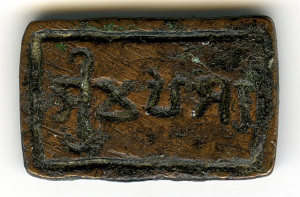
Inscription IN01107 on a rectangular metal seal cast in a copper alloy (note: image reversed).

